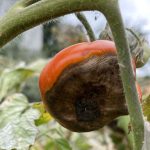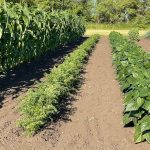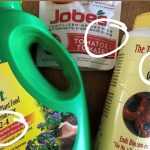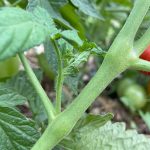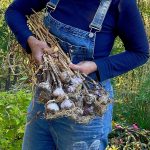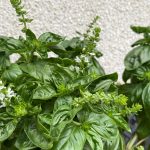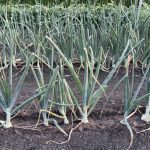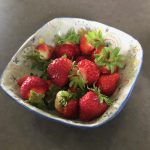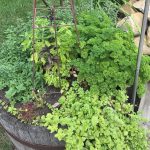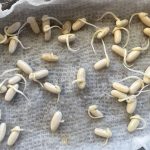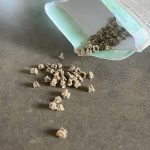Growing tomatoes can be a rewarding experience, but it can cause a little apprehension, especially when it comes to pruning them. Tomatoes come in two types: determinate and indeterminate, and each type requires a different approach to pruning.
In this guide, we will discuss everything you need to know about pruning tomato plants, from understanding the differences between determinate and indeterminate varieties and knowing how to recognize tomato suckers to the best tools to use when pruning tomatoes and the proper techniques to follow for pruning tomatoes.
With these tips and tricks, you’ll be well on your way to growing a thriving tomato crop!

Want the inside scoop on more gardening tips? Get early access to all my blogs and exclusive content by signing up for my newsletter!
Differences Between Determinate vs Indeterminate Tomatoes

Before diving into the pruning techniques for determinate and indeterminate tomatoes, let’s discuss the differences between the two types.
How Determinate Tomatoes Grow
Determinate tomatoes, or bush tomatoes, grow to a certain height and produce all their fruit within 2-3 weeks.
Determinate plants tend to be more compact in size, as their height maxes out at a ‘determined’ height, which is usually 60-90 cm (2-3′).
Determinate tomatoes and are perfect for container gardening or growing in small garden spaces, and they don’t usually need staking.
Once they have produced all their fruits, they will stop growing and eventually die because their life cycle is complete.
Determinate tomatoes require minimal pruning.
Examples of determinate tomatoes include: Bush Beefsteak, Bush Early Girl, Health Kick, Subarctic Maxi, Tumbler, and Ultra Sweet.
How Indeterminate Tomatoes Grow
Indeterminate tomatoes, on the other hand, are also known as vining tomatoes.
They grow and produce fruit continuously throughout the growing season until frost or disease takes them out. Their height is ‘undetermined’ or ‘undefined’.
They grow taller, up to 2-3m (6-9′), and their fruits are generally smaller. Cherry and grape tomatoes are typically indeterminate, however, there are indeterminate beefsteak type tomatoes, too.
They often require staking or caging to support their growth and can need regular pruning to promote better air circulation and fruit production.
Understanding the growth habits of your tomato plant will help you determine the best pruning method and increase your yield.
Why Pruning Tomatoes is Important for a Healthy Crop
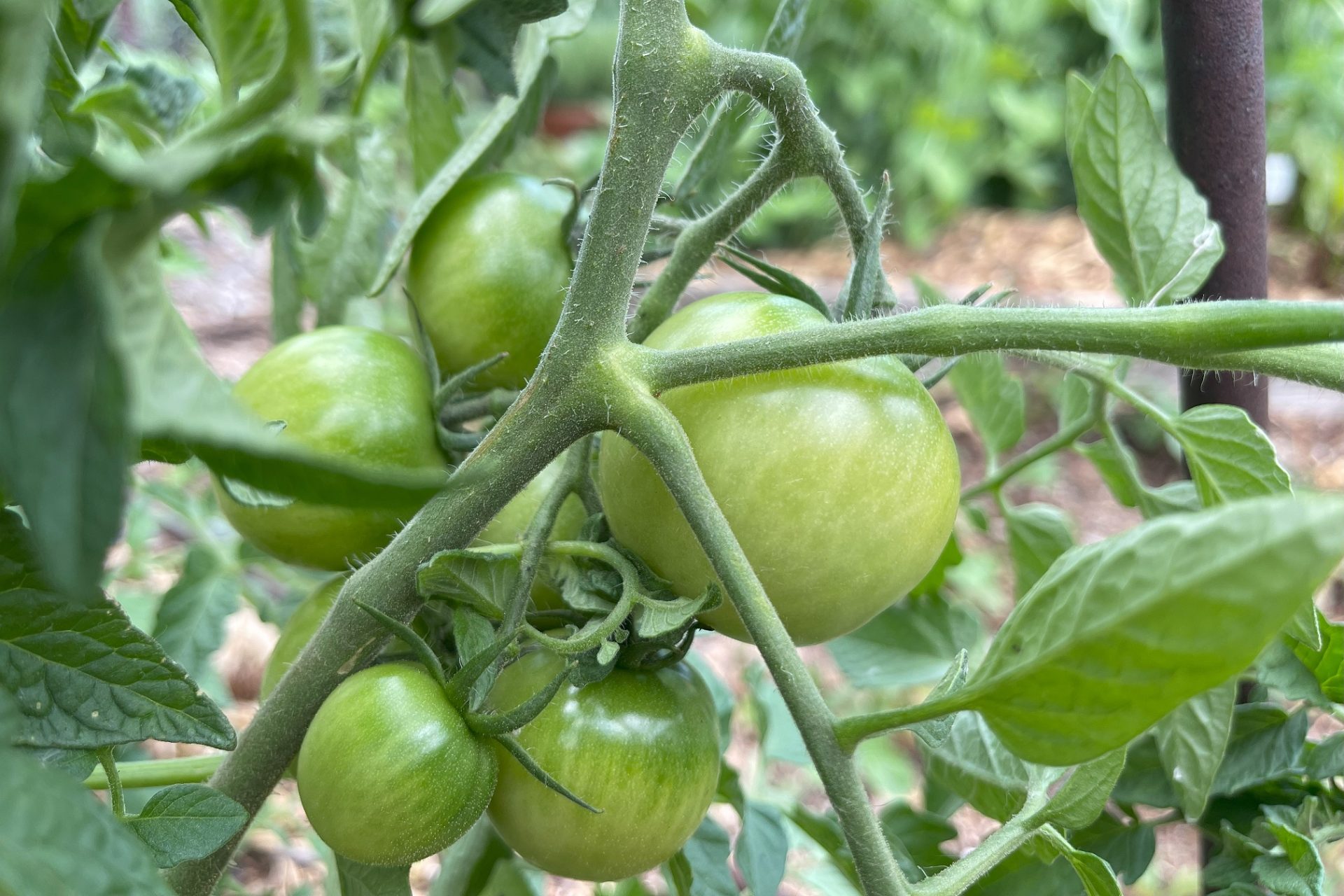
Pruning tomatoes is a task that all tomato growers should be aware of and it is much more than knowing how to deal with tomato suckers.
Pruning involves removing certain parts of the tomato plant to promote better growth, disease resistance, and overall yield, as it allows the plant to focus its energy on producing fruit rather than on excessive growth.
Tomato pruning is beneficial because:
- Weaker branches are removed, which are less productive and could potentially harbour pests and diseases.
- Pruning increases airflow around the plant branches and allows sunlight to reach all parts of the plant.
- Pruning also helps control the size and shape of the plant. By pruning, you can keep the plant within a manageable size, making it easier to harvest and maintain.
- It’s important to note that pruning too much or too late can result in stunted growth and reduced fruit production.
Principles for Pruning Determinate Tomato Plants

Pruning determinate tomato plants is a slightly different process from pruning indeterminate tomato plants.
With determinate plants, you don’t want to remove too many branches, or you’ll reduce your overall yield.
The main goal with pruning determinate tomato plants is to keep them tidy and prevent the plant from becoming too thick and bushy and keep good air flow amongst branches.
The best time to prune determinate tomato plants is when they are young, ideally before they start setting fruit. Pruning determinate tomato plants too late can result in a reduced yield.
Begin by removing any suckers or branches that grow below the first flower cluster. These branches produce more petite tomatoes and can take away from the overall yield of the plant.
Next, remove any branches growing inward towards the center of the plant, as these can block sunlight from reaching the fruit.
Finally, remove any branches that look diseased or damaged.
Be careful to remove only the most necessary leaves, as they are essential for photosynthesis.

Want the inside scoop on more gardening tips? Get early access to all my blogs and exclusive content by signing up for my newsletter!
Principles for Pruning Indeterminate Tomato Plants

Indeterminate tomato plants can grow incredibly large and bushy, producing foliage that may interfere with the plant’s overall health and fruit production.
These plants require more pruning to promote healthy growth and maximize fruit production than determinate tomatoes.
The best time to prune indeterminate tomato plants is when they are around 12-18 inches tall. This is usually 3-4 weeks after planting.
As with determinate tomato plants, remove any branchers or suckers on indeterminate tomatoes that grow below the first flower cluster. These stems will produce very small tomatoes or the leaves may rot or get diseased as they are in contact with wet soil or mulch.
Be careful not to remove too much foliage, however, as the leaves are essential for photosynthesis and the production of carbohydrates that the plant needs to grow and produce fruit.
Remove any damaged or diseased leaves and branches. This can help prevent the spread of disease and improve overall plant health.
Additionally, removing branches or leaves that are shading the fruit can help improve tomato fruit colour and flavour.
Toward the end of August, as the growing season draws to a close, prune off all the terminal ends or growing tips from indeterminate tomatoes so their energy will be directed at ripening the tomatoes.
Indeterminate tomatoes will continue to flower and set fruit until frost, and pinching the terminal ends will prevent a crop of small, green, unripened tomatoes.
How to Identify Suckers on Tomato Plants and Two Approaches to Pruning Them
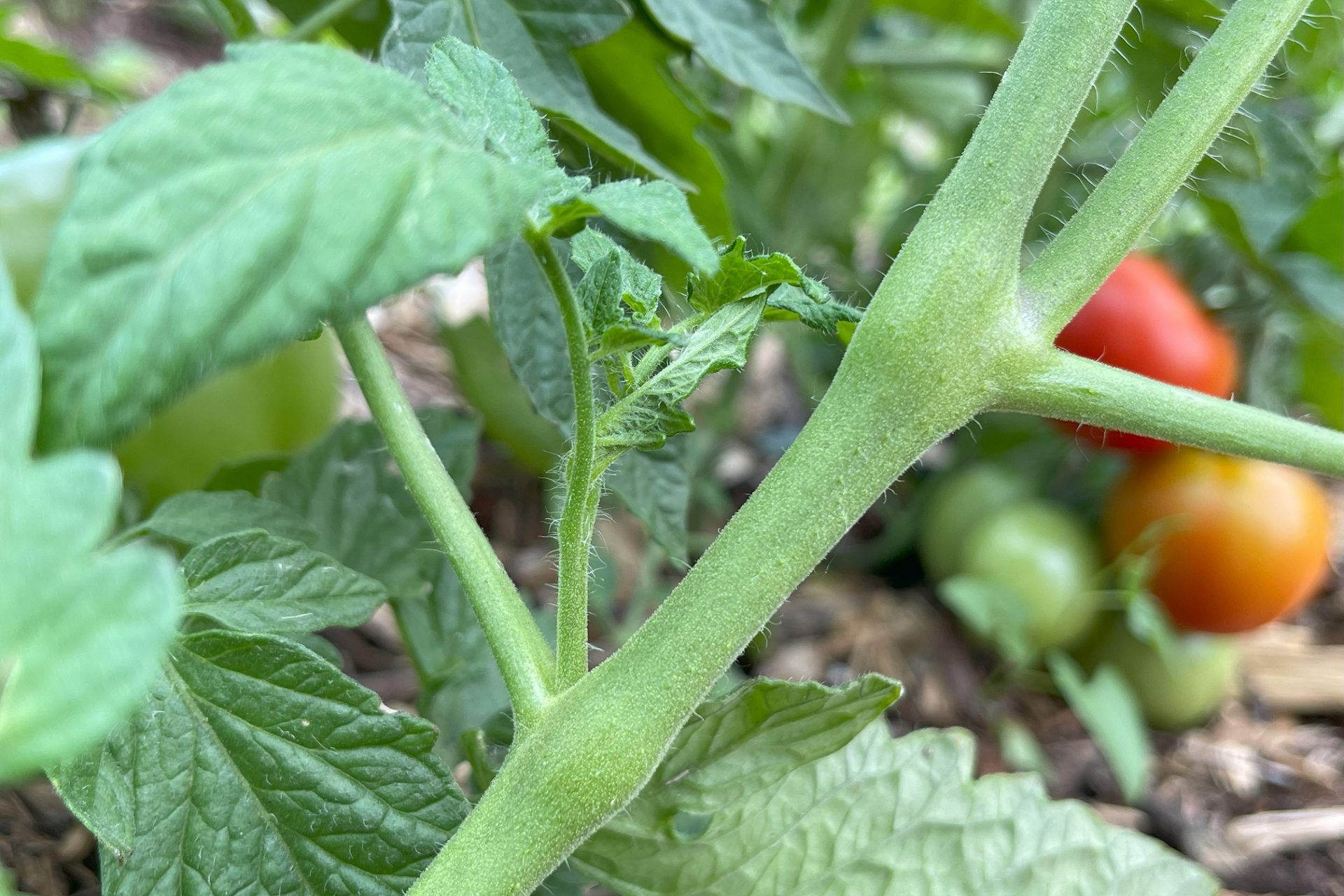
What to do with tomato suckers has always been a hotly debated topic.
Suckers are secondary fruit-bearing branches that emerge between the tomato’s main stem and the leaves, often referred to as “side shoots” because they grow from the side of the plant stem. They can be easily distinguished from the main stem because they have a thinner stem and smaller, thinner leaves.
There are two schools of thought on dealing with tomato suckers, and research supports each viewpoint.
Thought #1: Tomato Suckers Reduce Tomato Production
This view on tomato suckers says that they drain energy from the tomato plant resulting in reduced yields and smaller fruit sizes.
Therefore, in this method, identifying and removing suckers is essential to tomato pruning.
Pruning out suckers is most beneficial for indeterminate tomato plants, which continue to grow throughout the season. It seems that sometimes these plants divert their attention from fruit production to green growth.
If an indeterminate tomato plant is full of thick, leafy growth, removing suckers can promote healthy growth and maximize yields instead of green leaf development.
Thought #2: Suckers Can Increase Tomato Production
The main idea with this point of view is to leave suckers to grow freely and they will improve tomato output.
This approach is most advantageous for determinate tomato plants, which grow to a predetermined size and produce fruit all at once. They should not have their suckers removed as it can reduce the overall yield.
There are two questions to ask about tomato suckers to determine if they should be pruned out:
- Is the tomato plant producing fruit or is it stuck in a pattern of green leafy growth?
- Is there enough time in the season for all the tomatoes to ripen? Depending on the variety, tomatoes need anywhere from 40-70 days to mature. Take out any new tomato flowers if there isn’t enough time in the growing season for the new tomatoes to develop and ripen.
The final choice for dealing with tomato suckers is ultimately up to the individual gardener, you may want to try both methods to see which works best in your garden.

Want the inside scoop on more gardening tips? Get early access to all my blogs and exclusive content by signing up for my newsletter!
Tools, Tips, & Techniques for Pruning Tomatoes

Having the right tools for pruning tomatoes ensures that you are not damaging the plant or spreading diseases.
Handy Tools for Pruning Tomato Plants
Here are some tools that work well for pruning tomato plants:
1. Pruning Shears: These are used for cutting stems up to 1 inch in diameter. Look for shears with a sharp blade and comfortable grip.
2. Garden Gloves: Protect your hands from dirt, thorns, and blisters with a good pair of garden gloves. Choose gloves that fit well and have a good grip.
3. Garden Scissors: These are useful for snipping off small stems, leaves, or flowers. They are also great for cutting twine or string.
4. Twine, Plant Clips, & Plant Ties: Use these to secure your tomato plants to stakes or trellises to keep them upright and prevent them from bending or breaking. Velcro plant ties are my favourite.
5. Hot, Soapy Water: Before and after pruning, washing your tools is essential to prevent the spread of diseases. You may use a disinfectant, like Lysol spray or wipes, if you like, to clean your shears, scissors, and other tools.
Tips & Techniques for Pruning Tomato Plants
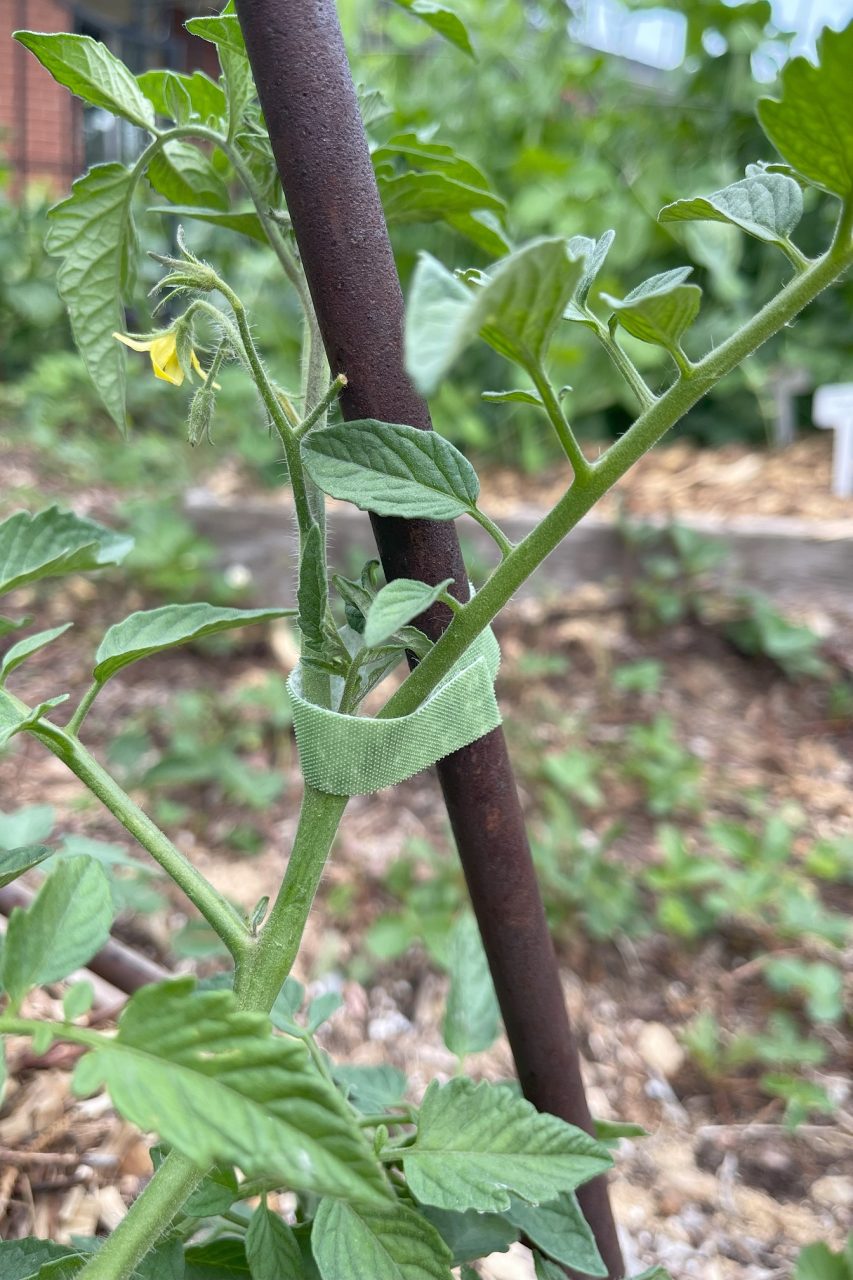
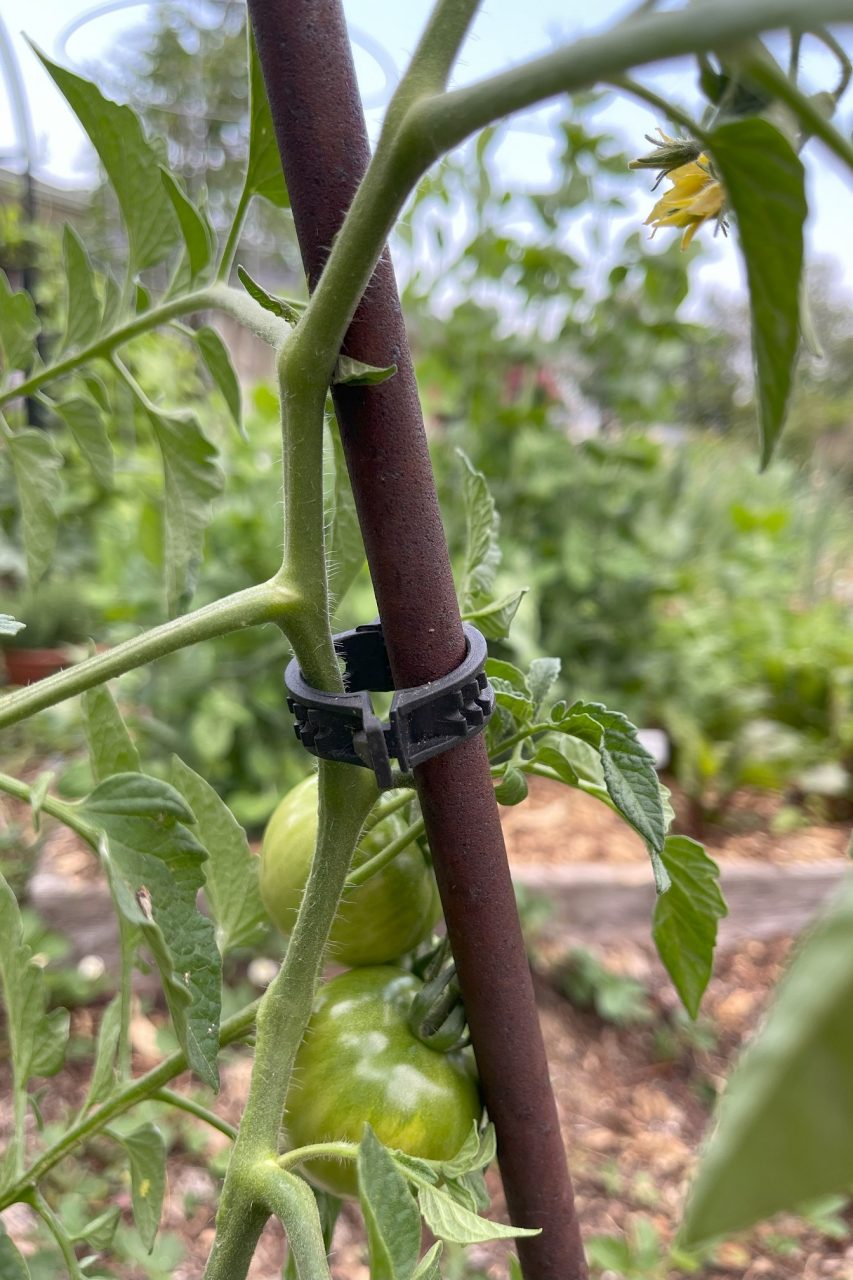
To ensure that your tomato plants are healthy and productive, incorporate these practical tips for maintaining healthy tomato plants during pruning.
- Always start with clean, sharp pruning shears to prevent the spread of disease. Before pruning, wash shears well with hot soapy water. Bleach isn’t necessary, but a mild bleach solution can be helpful.
- Prune out any dead or diseased leaves or stems as soon as you notice them. This will prevent the spread of disease to healthy parts of the plant. Wash your clippers after each cut of a diseased stem to avoid transferring the disease.
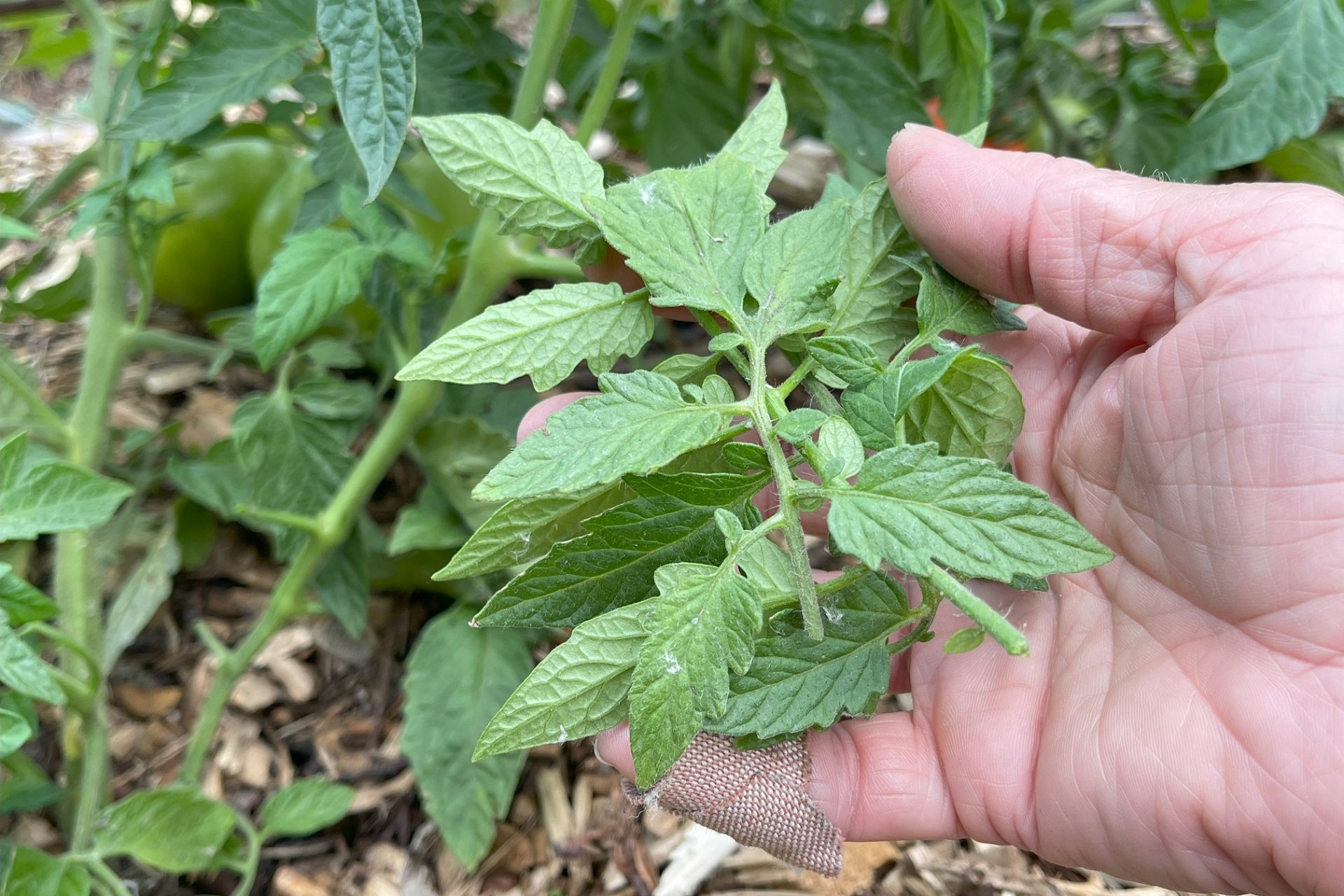
- Remove any trimmed tomato branches or leaves from the garden to keep the garden free from any potential diseases the composting leaves could spread.
- Always make clean cuts and avoid tearing or damaging the remaining stems or leaves. This will promote quick healing and prevent the plant from becoming stressed.
- Secure plant twine, clips, or ties loosely around plant stems to allow them to expand as they grow. The flow of nutrients and water can be slowed if the ties constrict the stems.
- Water and fertilize your tomato plants regularly to promote healthy growth, as pruning can be stressful for plants, so giving them the nutrients they need to recover quickly is essential.
Related: For more on tomato care, check out these tomato blogs:
Final Thoughts on Pruning Tomato Plants
Knowing the Difference Between Determinate and Indeterminate Tomatoes
Knowing when and how to prune your tomato plants can be the difference between a bountiful and a disappointing harvest. It’s important to know the difference between determinate vs indeterminate tomatoes when you start pruning.
It’s also important to note that pruning is just one aspect of tomato plant care, and proper watering, fertilization, and disease prevention are also crucial for a successful harvest.
Overall, the key to successful tomato plant pruning is understanding your plants an being confident in your technique. With practice and patience, you’ll be able to master the art of pruning and enjoy a bountiful tomato harvest!
©Sharon Wallish Murphy ©Gardening with Sharon



